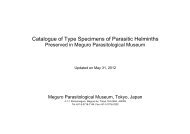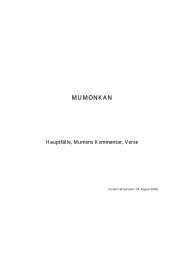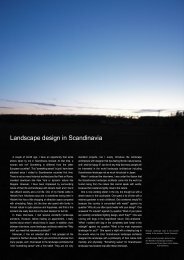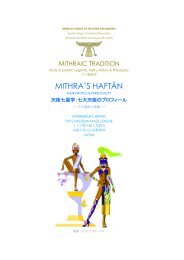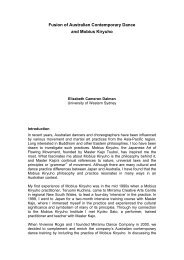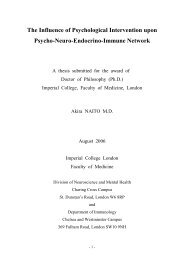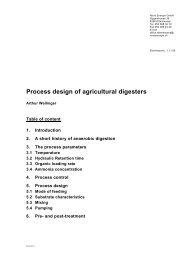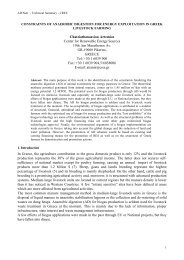III. No-Till Farming Systems - nifty
III. No-Till Farming Systems - nifty
III. No-Till Farming Systems - nifty
You also want an ePaper? Increase the reach of your titles
YUMPU automatically turns print PDFs into web optimized ePapers that Google loves.
zilian National Zero <strong>Till</strong>age Meeting, where the papers presented expressed the<br />
authors’ convictions on the subject of Zero <strong>Till</strong>age (ZT). This meeting counted on<br />
the illustrious presence of Alberto Duque Portugal, President of the Brazilian<br />
National Research Corporation – Embrapa; Paulo Alfonso Romano, the<br />
(National) Secretary of Water Resources of Brazil’s Environment Ministry as<br />
well as the representative of José Roberto Marinho, President of Radio Globo and<br />
Chairman of the Board of Directors of WWF-Brazil and Garo Batmanian, CEO<br />
of WWF-Brazil.<br />
In the words of the President of Embrapa, we note the auspicious development<br />
of Zero <strong>Till</strong>age, giving credit to those who merit it:<br />
“We researchers started late in this question (Zero <strong>Till</strong>age), in which the<br />
farmer took the lead. I would like to underline the initiative of the farmers of<br />
Central Brazil who pressured research to get involved with Zero <strong>Till</strong>age. As a<br />
means of improving the identification of research demands, we have learned that<br />
we should pay great attention to what the farmer is saying, because he knows<br />
what he’s talking about”.<br />
With the involvement of the government research institutions alongside the<br />
efforts of the farm input suppliers in divulging this technology both pressured by<br />
the farmer in his untiring quest for progress, creative and ever-willing to try new<br />
practices, we are progressing surely in the direction of greater and greater adoption<br />
of Zero <strong>Till</strong>age. The annual area covered by protective crop residues is growing<br />
every year, already covering 4.5 million hectares in 1995/6 and extending to<br />
over 14 million hectares by 1999/2000 (figures for the summer-planted main crop<br />
area plus winter small grains).<br />
In describing this picture, it is our duty to recognize the apostolates of three<br />
untiring companions in the dissemination and promotion of Zero <strong>Till</strong>age, all motivated<br />
by their ideals: Manoel Henrique Pereira and Herbert Bartz of Brazilian<br />
origin and John N. Landers, an Englishman adopted by Brazil. They merit recognition<br />
from both farmers and technicians, all peers in the promulgation and stimulation<br />
of sustainable agriculture, practiced throughout the country.<br />
Fernando Penteado Cardoso<br />
Agrolida Ltda., São Paulo-SP, Brazil<br />
The Environment and Zero <strong>Till</strong>age, Edited by Helvécio Mattana Saturnino and John<br />
N. Landers, Translated by John N. Landers, Brasilia: Associação de Plantion Direto no<br />
Cerrado, 2002. 144 pp. ISBN: 85-865006-01-x.<br />
Cover photos show that crop rotation and good biomass generation are fundamental to<br />
sustainability.<br />
Copies of the book may be obtained from:<br />
• APDC. SCLRN 712 Bloco C Loja 18 – Brsilai – DF – Brazil – Cep 70760-<br />
533; Phone: 55 (61) 272-3191/273-2154; Fax: 55 (61) 274-7245; apdc-<br />
DF@terra.com.br or john.landers@uol.com.br<br />
• FAO, Viale delle Terme di Caracalla, 00100 Rome, Italy. Ask Theodor<br />
Friedrich at theodor.friedrich@fao.org.<br />
518



